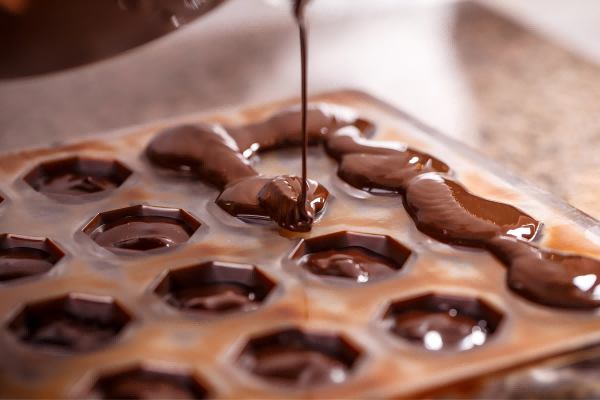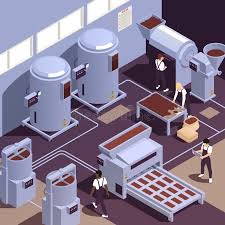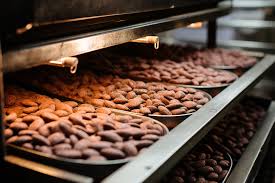Introduction: The Enduring Appeal of Chocolate
The global chocolate market is a multi-billion-dollar industry, driven by strong consumer demand and evolving taste preferences. For entrepreneurs and established companies alike, investing in a chocolate production line represents a significant opportunity. However, understanding the intricate investment costs is crucial for success. This article provides a comprehensive breakdown of the financial considerations involved, from initial setup to long-term operations, helping you make an informed decision.
Market Value and Production Line Types
The Value Proposition of a Chocolate Factory
Beyond a simple indulgence, chocolate is a versatile product with a high-profit margin and a long shelf life. A well-planned chocolate production line can capitalize on this demand, enabling the creation of diverse products from classic bars to artisan confections. The market value is continuously growing, making it a compelling area for investment.
Small-Scale vs. Automated Chocolate Production Lines
The scale of your operation is the primary driver of your investment cost.
- Small-Scale/Artisan Production Line: Ideal for niche markets, bakeries, or startups. This setup often involves manual or semi-automatic equipment, focusing on craftsmanship. While the initial investment is lower, it has limited output and higher labor costs per unit.
- Medium to Large-Scale Automated Production Line: This is the standard for commercial and industrial production. A fully automated chocolate production line includes sophisticated machinery for every stage, from bean processing to packaging. This type of line requires a much larger initial investment but offers significant advantages in efficiency, consistency, and a lower cost per unit in the long run.
Deconstructing the Investment Cost
The total cost of a chocolate factory is not just the equipment. It’s a combination of several key components that must be carefully calculated.
1. Equipment Costs
This is often the largest single expense. The price varies dramatically based on the scale and level of automation. Key machinery includes:
- Roaster: For processing cocoa beans.
- Winnower: To separate the nibs from the shells.
- Grinding/Ball Mill: Essential for refining cocoa nibs into cocoa liquor.
- Conche: A crucial machine for flavor development.
- Tempering Machine: Ensures the chocolate has a smooth texture and glossy finish.
- Moulding/Depositing Machine: Shapes the chocolate into bars, pralines, or other forms.
- Packaging Machine: Automatically wraps and seals the final product.
A simple artisan setup might cost from $50,000 to $150,000, while a fully automated chocolate production line for a mid-sized factory can range from $500,000 to over $2 million, depending on capacity and additional features.
2. Plant and Facility Costs
Your factory building must be suitable for food production. This includes costs for:
- Building/Lease: The size and location of your facility.
- Utilities: Installation of robust electrical, water, and HVAC systems.
- Sanitation: High-grade food-safe flooring, walls, and drainage.
- Climate Control: Maintaining a precise temperature and humidity is critical for chocolate quality. A dedicated HVAC system can be a substantial expense.
3. Raw Material Costs
Initial inventory is a significant startup cost. This includes:
- Cocoa Beans: The primary and most volatile ingredient.
- Sugar, Milk Powder, Cocoa Butter: Other essential components.
- Nuts, Fillings, and Flavors: For creating a variety of products.
4. Labor Costs
Staffing a chocolate factory requires a mix of skilled and semi-skilled labor.
- Technical Staff: Experienced operators for complex machinery.
- Maintenance Crew: For equipment upkeep.
- Quality Control: To ensure product consistency.
- Management & Administration: For running the business.
5. Operating and Miscellaneous Costs
These are the ongoing expenses required to keep the business running.
- Utilities: Electricity and water are major costs, especially for high-energy equipment like grinders and roasters.
- Maintenance: Regular servicing and unexpected repairs.
- Logistics & Distribution: Transporting raw materials and finished goods.
- Certifications: Obtaining food safety, quality, and other necessary certifications.
Return on Investment and Profitability
Calculating your ROI is essential for a compelling business case. Key factors include:
- Production Volume: The number of units you can produce per day, which directly impacts revenue.
- Profit Margin: The difference between your unit cost and selling price.
- Break-Even Point: The point at which revenue equals your total investment cost.
A well-run chocolate production line can achieve a payback period of 3-5 years, depending on market conditions, product pricing, and operational efficiency.
Strategies for Mitigating Investment Risks
- Choose the Right Equipment: Don’t just focus on the cheapest option. Look for equipment that is reliable, energy-efficient, and offers modularity for future expansion. A quality chocolate equipment supplier will provide detailed specifications and support.
- Embrace Automation: While the initial cost is higher, automated solutions drastically reduce labor costs, increase output, and improve product consistency, leading to a faster ROI.
- Scale Smartly: Start with a production line that matches your current demand and allows for future growth. Avoid over-investing in a line that is too large for your initial market.
Conclusion and Future Outlook
Investing in a chocolate production line is a capital-intensive but potentially very rewarding venture. The core to success lies in a meticulous analysis of all costs and a strategic approach to equipment selection and operational planning. For those seeking a reliable partner in this journey, it’s worth noting the position of industry leaders like Chengdu LST Science and Technology Co., Ltd. (LST).
Founded in 2009, LST has established itself as a premier provider of “mid-to-high-end chocolate equipment,” offering complete, end-to-end solutions. This includes a comprehensive product portfolio from cocoa bean processing to final packaging. Their core strengths lie in robust R&D, a firm commitment to quality evidenced by CE certifications and all-stainless-steel construction, and comprehensive global after-sales support. Their PLC-controlled, fully automated machines are not only highly efficient but also versatile, capable of producing a wide range of chocolate products. This focus on performance, quality, and service has enabled LST to build a strong global market presence, with their equipment sold extensively across Europe, Asia, and the Americas. By partnering with a company like LST, investors can benefit from proven expertise and a holistic approach to building a successful chocolate factory.
Post time: Sep-26-2025



